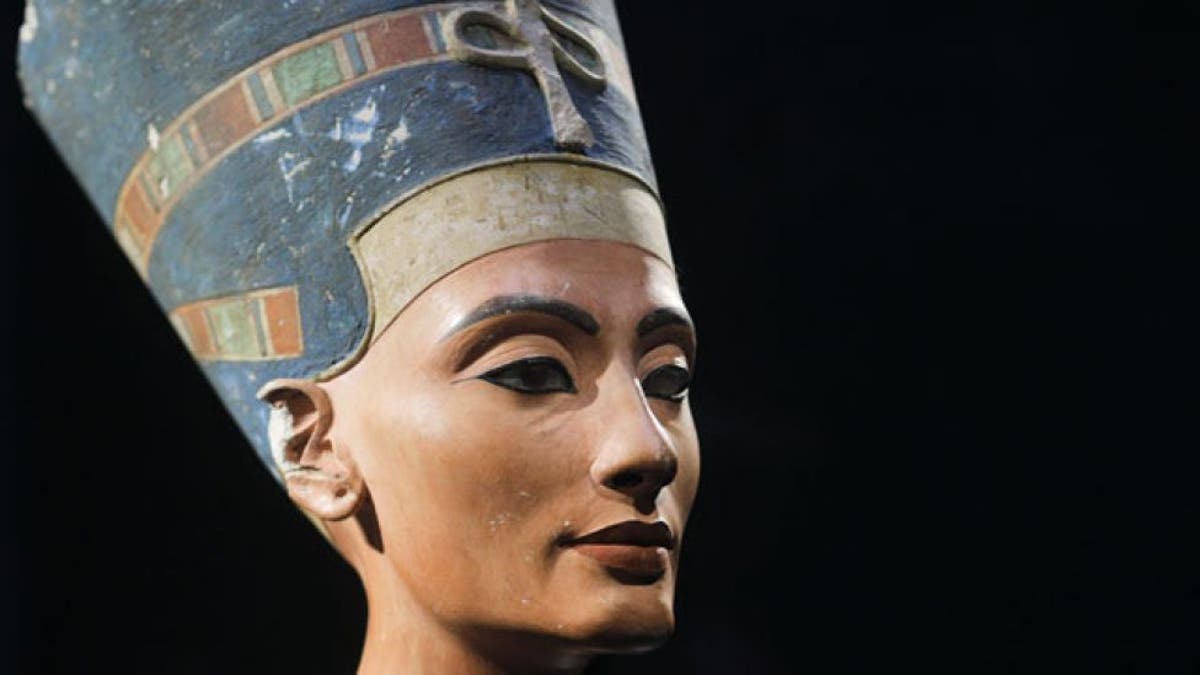
This undated photo shows a bust of ancient Egyptian Queen Nefertiti in the Neues Museum in Berlin. (AP)
One of Egypt's greatest mysteries could be solved as scientists think they have located the final resting place of the ancient Egyptian queen, Nefertiti.
A team of Egyptologists thinks that the famously beautiful and powerful female monarch could be buried inside a secret chamber within King Tutankhamun's legendary tomb.
The team of British and Egyptian archaeologists, led by the former Egyptian Antiquities Minister Mamdouh Damati, recently conducted a three-day long radar scan of King Tut's tomb, famously discovered by Howard Carter in 1922 in Egypt's Valley of the Kings.
Previous radar searchers have revealed that there are chambers and organic materials behind the walls of Tutankhamun's tomb but no one is sure whether they are naturally forming rock cavities or man-made areas.
A theory by English Egyptologist Nicholas Reeves indicates that Nefertiti is buried in one of the rear chambers and the recent radar scans have given new hope to this idea being true.
The research inside Tut's burial chamber will continue until the end of 2019 and the researchers will bring in specialist chemists to analyze the latest radar results.
If the recent radar scans are deemed as more evidence that the hidden chambers are man-made then the scientists might decide to break down some of the walls in Tut's tomb to investigate further.
Conservationists recently breathed new life into the fabled burial chamber where the young Pharoh's mummified body was laid to rest nearly 3,000 years ago.
Tutankhamun ruled over Egypt from 1332-1323 BC.
He was just nine years old when he took the throne, and ruled for approximately ten years, presumably aided by powerful advisers or priests.
During his reign, he restored the supremacy of the Egyptian god Amun, after worshipping the deity was banned during his father's reign.
The cause of Tutankhamun's death has been the source of great debate, with no records of his final days.
Queen Nefertiti was born around 1370 B.C. and died around the age of 40.
She was the Great Royal Wife of Akhenaten, an Egyptian Pharaoh and they were also known for a religious revolution as they only worshipped one god, which was Aten the sun disc god.
They ruled during the wealthiest period in ancient Egyptian history.
Nefertiti was made famous by the beautiful bust of her head, which can be seen in Berlin's Neues Museum.
This story originally appeared in The Sun.
